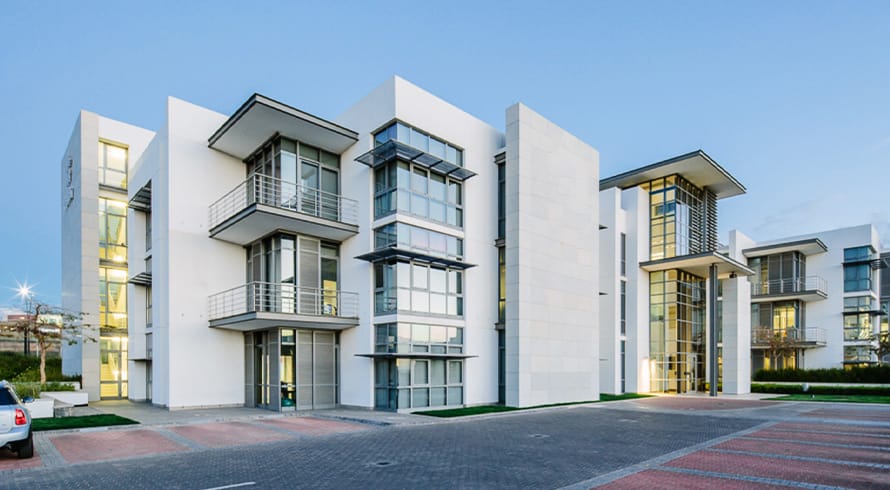VAT on the sale of mixed-use and partially tenanted buildings as going concerns: A recap
In terms of section 11(1)(e), the supply of an enterprise or part thereof, which is capable of separate operation may be subject to VAT at the zero rate, provided that the seller and purchaser are both registered vendors; the supply consists of an enterprise or part of an enterprise capable of separate operation; the parties agree in writing that the supply is a going concern; the parties, at the conclusion of the agreement, agree in writing that the enterprise will be an income earning activity on the date of transfer; the assets necessary for carrying on the enterprise are disposed of to the purchaser; and the parties agree in writing that the consideration for the supply includes VAT at the zero rate.
It follows that vendors selling mixed-use fixed property or partially tenanted fixed property need to properly consider their entitlement to apply VAT at the zero rate to the sale of such properties.
Mixed-use properties are properties used partly for making taxable supplies and partly for making non-taxable or exempt supplies, such as a building that has commercial or retail space on the ground floor and residential accommodation on the top floors. A partially tenanted property is a fully commercial property, but which is only partially tenanted, meaning that part of the property is vacant.
Mixed-use property
Where a building or property comprises taxable retail areas and exempt residential accommodation, notwithstanding that part of the property is used for exempt purposes, the supply of the entire property is deemed to be a taxable supply in terms of section 8(16) of the VAT Act. The proviso to section 11(1)(e) provides that, where goods are applied mainly for purposes of an enterprise, and partly for other purposes, the supply is deemed to form part of the enterprise, notwithstanding the proviso to the definition of “enterprise”, which excludes VAT exempt activities. It must therefore be determined whether the vendor can show that the property is used “mainly” for the commercial enterprise, to determine whether the zero rate may be applied to the whole transaction in accordance with the proviso to section 11(1)(e).
Section 11(1)(e) does not prescribe the basis upon which the use of the goods for making taxable supplies is to be determined. However, in the South African Revenue Service’s (SARS) VAT Interpretation Note 57 (IN57), which provides some guidance on each of the “going concern” requirements, SARS indicates that “mainly”, in this context, means more than 50%. IN57 provides an example which refers to “the area” of a property. From IN57, SARS seems to be of the view that where more than 50% of the floor space is used for commercial purposes, this indicates that a property is used mainly for taxable purposes.
Notwithstanding what seems to be SARS’ view regarding the applicability of floor space when determining the use of fixed property, we note that SARS’ interpretation notes are not law (see Commissioner for the South African Revenue Service v Marshall NO 2017 (1) SA 114 (SCA)). The fact remains that the legislation in this instance does not prescribe the basis upon which the application of the goods disposed of should be determined, for the purpose of establishing whether the goods are used mainly for the purposes of the enterprise. It follows that any reasonable alternate method of measurement, for example, a measurement based on the extent of taxable versus exempt revenue derived from a property, is not excluded. In this regard we note, however, that in practice, SARS simply applies the principles as set forth in IN57 and, as such, generally only considers the floor space or area of a property and not the income derived from it, for purposes of determining its use or application. It seems that SARS will simply continue to apply this method of determination until such time as it is formally disputed or until IN57 is updated in this regard.
In order to achieve a middle ground, vendors in this instance could consider applying section 8(15) of the VAT Act. Section 8(15) provides for a supply to be apportioned between zero rated and standard rated components, where if separate considerations had been payable, part of the supply would be subject to VAT at the standard rate and part at the zero rate.
A vendor could accordingly seek to apportion the selling price between the taxable retail space and exempt residential space, so as to enable VAT to be levied at the zero rate on the portion of the selling price attributable to the retail area of the property being sold. This is in line with IN57 which provides that if the goods are not used mainly for the purpose of the enterprise, then the portion of the consideration payable for the property, which is used for carrying on the enterprise, qualifies for the zero rate in accordance with section 8(15), and VAT at the standard rate is therefore only payable on the consideration for the remaining part of the property.
Partially tenanted properties
In determining the application of the zero rate to partially tenanted properties, it is necessary to consider the “income earning” requirement applicable to the supply of a going concern as provided by section 11(1)(e).
With regard to the income earning requirement, and specifically leasing activities, IN57 stipulates that the supply of a leasing activity must consist of an underlying asset that is the subject of a lease, together with the contract of lease.
SARS has previously stated that a vendor that conducts a commercial leasing activity cannot sell the rental income earning enterprise as a zero rated going concern if the leases are terminated before the transfer takes place. This is because the vendor will only be selling a property and the income earning activity is not supplied together with the property. It follows that where a vendor has a partially tenanted building with lease agreements in place in respect of only part of the property, it will have to be determined if the sale of the whole property constitutes an income earning activity.
SARS initially indicated in its Practice Note 14 (withdrawn from 31 March 2010), that a property could only be regarded as income earning if tenanted 80% or more. SARS then subsequently stated that an occupancy level of more than 50% is accepted. The level of occupancy required for a leasing activity to be regarded as a going concern has, however, not been incorporated in IN57. Despite this, SARS still seems to apply the 50% occupancy level test in practice. It follows that where a property is more than 50% tenanted, SARS will generally accept this as being an income earning letting enterprise which may be disposed of as a going concern at the zero rate.
In the South African case of ITC 1622 [1996] 59 SATC 334 (N) the court was required to determine whether the sale of a property comprised the transfer of an enterprise as a going concern in terms of the provisions of section 11(1)(e). Galgut, J stated that the question of whether the disposition in use was a going concern was a question of hard fact and depended on exactly what was sold. It follows that, notwithstanding what seems to be SARS practice regarding the occupancy levels, it remains that whether a letting enterprise is disposed of is a question of fact, and the occupancy level should merely be considered a guideline.
Consequently, it is arguable that a lower occupancy level at the time of transfer could also qualify as a letting enterprise if it can be substantiated that the occupancy level dropped due to exceptional or temporary circumstances, and the intention of the parties at the time of the conclusion of the agreement was to dispose of and acquire a letting enterprise, as opposed to disposing only of an asset. So, for example, even if a property is less than 50% tenanted at the time of transfer, where the property is commercial in nature, and the property is available for letting and actively marketed at the time of transfer, then, on the basis that it is the intention of the parties to dispose of and acquire a letting enterprise, and if the requirements of section 11(1)(e) are met, the zero rate should still apply.
Each transaction must be considered on the underlying facts and on its own merits. However, it remains that due to the current SARS practice, where a property is less than 50% tenanted, SARS may take the view that only the sale of the portion of the property that is tenanted constitutes a going concern. In this instance, the more conservative approach would again be to apportion the consideration in terms of section 8(15) of the VAT Act and to account for VAT at the zero rate on the consideration attributable to the tenanted portion of the property and at the standard rate on the consideration attributable to the vacant portion.
Comment
SARS generally gives due consideration to the application of the zero rate in respect of going concern transactions and tends to follow the guidance provided in IN57 in this regard. As discussed above, notwithstanding that neither the floor-space method nor the occupancy levels of a property are prescribed methods of determination for purposes of the application of section 11(1)(e), and that IN57 is not law, it remains that until such time as SARS’ practice as provided for in IN57 is formally disputed, or another policy document reflecting a change in SARS’ practice is issued, it seems that SARS will continue determining the application of the zero rate in this manner, without actually considering the facts on a case-by-case basis. It follows that vendors seeking to dispose of mixed-use properties or partially tenanted properties should carefully consider their entitlement to apply the zero rate under section 11(1)(e) to the sale of the entire property. If in doubt, such vendors should consider taking a more conservative approach by determining whether they are able to apportion the sales consideration to avoid the risk of any penalties or interest that may be levied by SARS on what it deems to be the incorrect application of the zero rate.
The information and material published on this website is provided for general purposes only and does not constitute legal advice. We make every effort to ensure that the content is updated regularly and to offer the most current and accurate information. Please consult one of our lawyers on any specific legal problem or matter. We accept no responsibility for any loss or damage, whether direct or consequential, which may arise from reliance on the information contained in these pages. Please refer to our full terms and conditions. Copyright © 2025 Cliffe Dekker Hofmeyr. All rights reserved. For permission to reproduce an article or publication, please contact us cliffedekkerhofmeyr@cdhlegal.com.
Subscribe
We support our clients’ strategic and operational needs by offering innovative, integrated and high quality thought leadership. To stay up to date on the latest legal developments that may potentially impact your business, subscribe to our alerts, seminar and webinar invitations.
Subscribe



